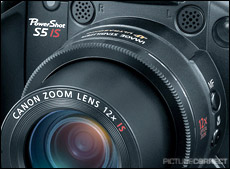
For millions of potential camera shoppers, choosing the smallest, lightest camera is most important while others may wish to hold down costs or only share photos online where image quality is limited anyway. For these and other shoppers, finding and paying for a more costly camera may be unnecessary. But for those who strive to capture images that record the most accurate and color correct images, there are choices they can make during the shopping process that can help to assure they end up with equipment that will be capable of producing outstanding images.
The primary decision is not about megapixels; or at least not entirely. A digital camera with 10 megapixels does not necessarily produce a better image than a camera with only 6 megapixels. Megapixels are important and a camera must have enough of them to provide adequate image information for the size print being produced so that there is less noise and better clarity in the resulting image. Unless a consumer plans on producing very large images, 5 megapixels is generally sufficient and 3-4 may be enough if prints will be 5×7 or smaller.
The sensor which captures the light entering the camera lens is even more critical however. The sensor stores and displays data, converting the light into electrons. The sensor can be either CCD (charge-coupled device) or CMOS (complementary metal oxide semiconductor). CCD is the more mature technology and produces images with less noise. They also tend to be more expensive and consume more power but for those seeking the highest quality images, a CCD is the better choice at this time.
An important aspect of the CCD is the actual size of the sensor. Larger sensors provide higher resolution and less noise. Understanding how the size of the CCD sensor influences the quality of images and knowing what size sensor is adequate requires a bit more study. There are several articles available on line which could prove valuable for those wishing to learn more about this topic.
A final consideration regarding the sensor in a digital camera is the availability of 1 CCD and 3 CCD models. As one might suspect more is often better. A camera with 1 CCD picks up image and color information through a single sensor. A model with 3 CCD has a sensor that picks up each of the different colors (Red, Green, and Blue) resulting in superior color reproduction.
Certainly the selection of a CCD sensor over a CMOS sensor, a larger sensor, or more sensors is not required in order to own a high quality digital camera capable of producing very good images. However, these features certainly do significantly enhance image quality and are the focus of attention for those seeking to produce the sharpest and most vivid images.
The author, Christine Peppler, encourages readers to visit her website for more information about purchasing a camera or other home electronics devices.
Like This Article?
Don't Miss The Next One!
Join over 100,000 photographers of all experience levels who receive our free photography tips and articles to stay current:






Leave a Reply